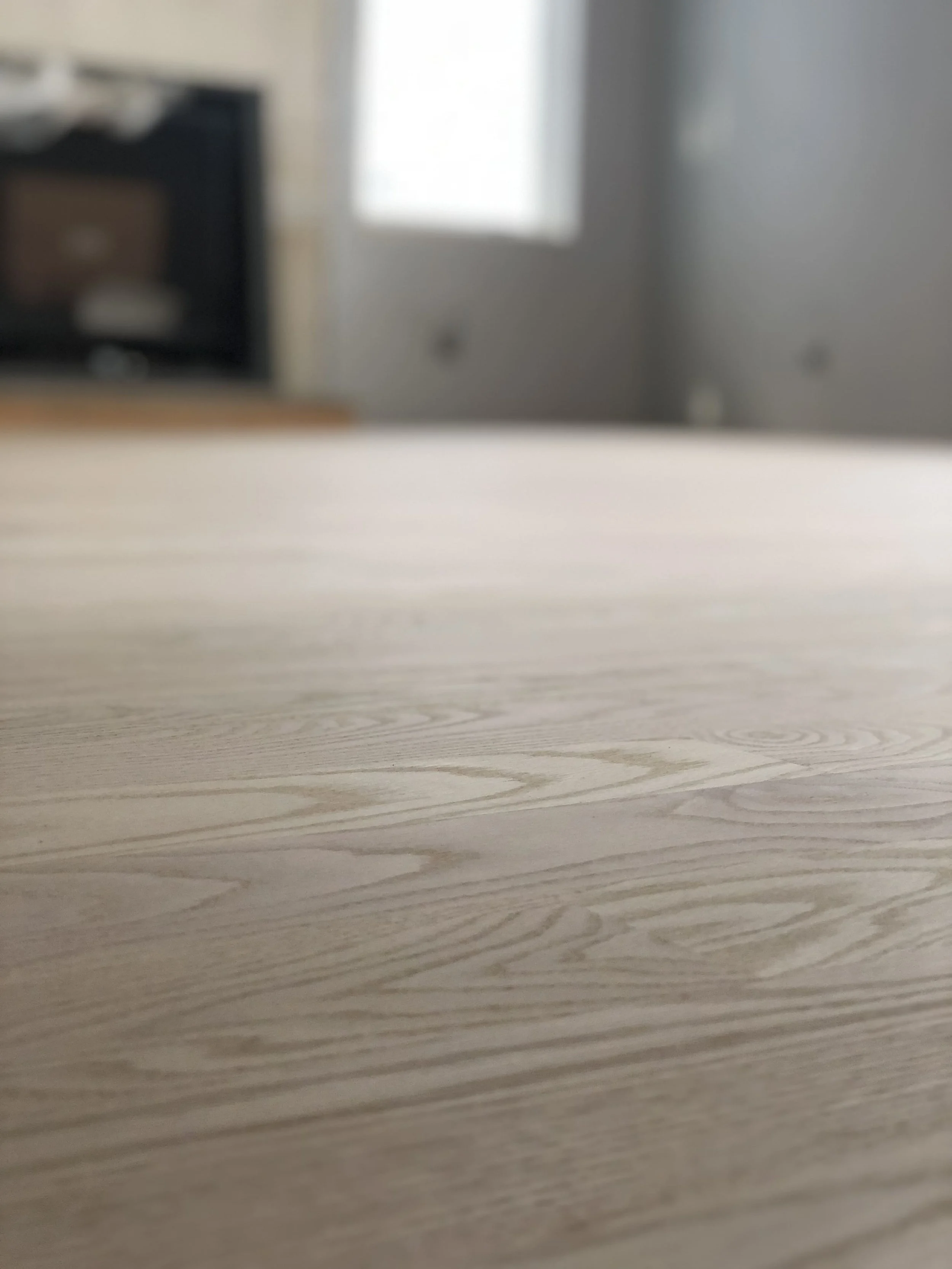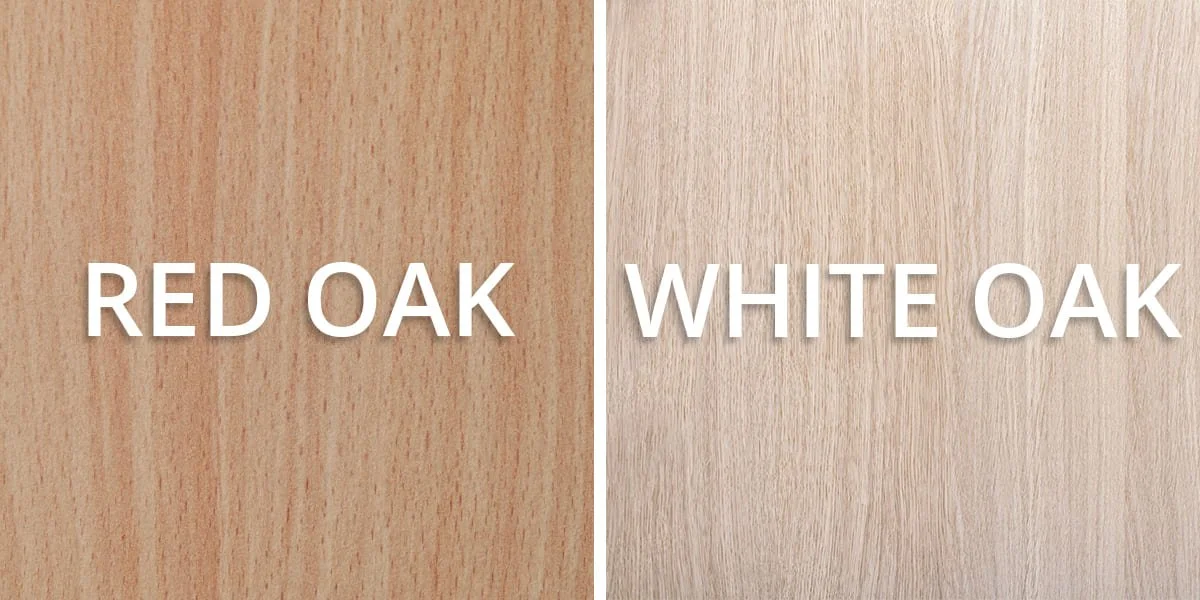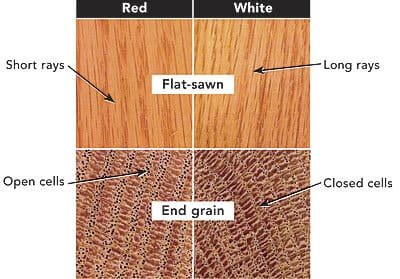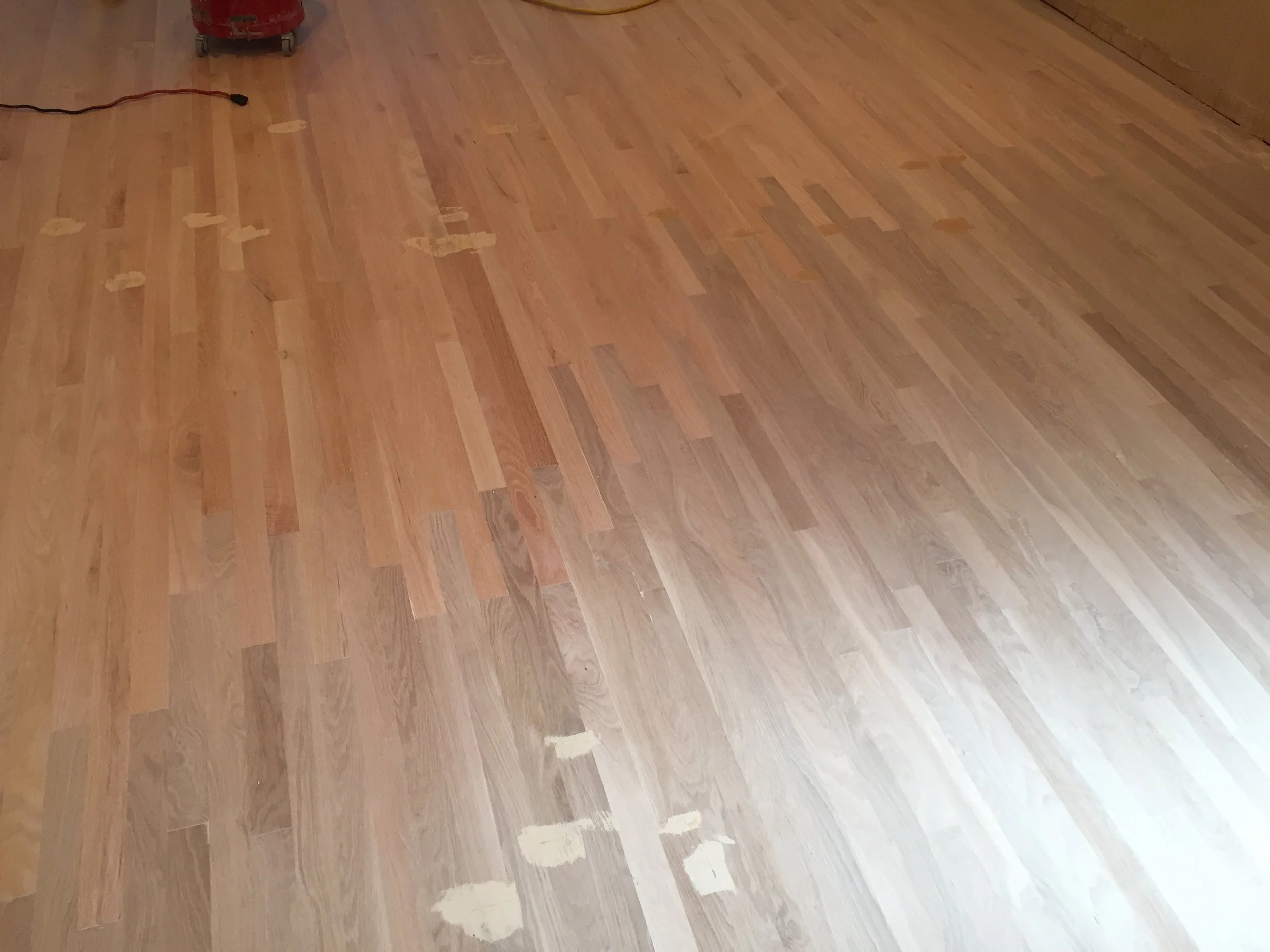White Oak vs. Red Oak: The Flooring Facts
Hey everyone, it's Patrick here kicking off yet another little flooring blog fiesta! Today, I had a brilliant lightbulb moment – I dove into the treasure trove of your favorite blog posts throughout the years, and guess what? This one's been a superstar! So, hold on to your flooring samples because I've jazzed it up with fresh facts, snazzy information, and some pro insights from yours truly. Let's embark on this journey together and dive into the fascinating world of hardwood flooring. Cheers to an upgraded and oh-so-2023-24 blog post – hope you're ready for a flooring adventure like never before! 🚀
White Oak vs Red Oak The Flooring Facts Decoded and updated
When it comes to choosing a hardwood floor, many people immediately think of oak. It’s a good choice as oak is one of the most durable types of woods as well as one of the most readily available. With the right installation and finish, oak can provide you a beautiful floor that can last more than 100 years. However, the age-old debate between white oak and red oak continues to perplex homeowners. Both types of oak flooring boast their unique features, making them desirable choices for various settings. But how do you decide which one is best suited for your needs? In this blog post, we will unveil the key differences between white oak and red oak flooring, guiding you through aspects such as color variations, grain patterns, hardness, water resistance, and cost. By the end of this, I anticipate that you will possess the knowledge needed to make an informed decision when choosing the ideal flooring for your home.
Key Takeaways
White oak and red oak flooring have distinct characteristics in terms of color, grain pattern, hardness, and water resistance.
White oak is harder than red oak, with slightly higher levels of coloring differences. Both require finishes for added protection.
Consider factors such as cost, design preference, and appropriate finishes when selecting between white oak or red oak flooring to ensure long-term flooring durability in your own home.
Where does oak come from, and what is it?
As a homegrown wood forested throughout the U.S., oak is considered more environmentally friendly as it has a much lower carbon footprint than more exotic woods. What is less well-known about oak is that there are actually two distinct types of oak flooring that you can install in your home: white oak and red oak.
While most instinctively choose White Oak, it may be worth your while to consider Red Oak, which can often be a more affordable and attractive option. Pricing usually plays a significant role in the decision-making process for homeowners when deciding between these two woods. It goes without saying that usually, you can find a better deal on these flooring products by visiting distributors and big box stores in person. However, I have pasted some Amazon links here to help you find some better flooring products online for those living in more rural areas.
Completely raw, unfinished Red Oak flooring
Unveiling the Characteristics of White Oak and Red Oak Flooring
White oak and red oak are the two species of oak wood commonly used in hardwood flooring. While they share some similarities, the main distinct differences between the two of them are in:
Color
Grain pattern
Hardness
Moisture susceptibility
Both types of oak flooring bring unique charm and character to your living space, we should examine these characteristics more thoroughly to better comprehend their individual attributes.
Color Variations in White Oak and Red Oak
Color differences between White Oak and Red Oak Flooring
One of the most noticeable differences between white oak and red oak flooring lies in their color variations. White oak flooring exudes hues of medium brown and tan, while red oak boasts tints and subtleties of red and pink. Both types of oak flooring accept stains well, but their staining capabilities differ. Red oak tends to turn a more distinct reddish shade when stained. White oak, on the other hand, generally darkens to a brown hue.
Despite their initial difference in color, as you apply stain to them that difference is diminished. In fact, with any stain darker than medium brown, the difference is almost indistinguishable unless side by side. This can be an important factor when you consider overall pricing, as it may not be necessary to pay the extra amount for white oak when you can easily get the same effect with red oak for less money.
No matter what oak you are choosing to go with, I highly recommend finishing the floors with a very natural and light appearance. This will better show off the wood that you have, and the lighter color will also make your space seem much bigger as well. A natural finish can further enhance the hue of each type of oak. However, a dark stain can have wonderful benefits too. A dark stain color can help blend the red & white oak together if you are stuck in a situation with two varying wood species inside of the same home. When finishing with a light appearance, the red oak will become more pink or reddish, while the white oak with tighter grain lines will darken and become more honey-blonde. However, if stained, the differences become more minimal the darker that the color gets. This flexibility allows you to experiment with finishes and stains to achieve your desired look and match the existing color palette of your home.
Mixed species flooring that includes red & white oak. Stained a very dark Ebony color & finished with Loba Invisible.
Grain Patterns: A Close Look
The other factor that can visibly distinguish one flooring from another is the grain pattern of the wood. While both are obviously oak, there is a definite difference between the look of White Oak and Red Oak based on the graining.
White oak exhibits a more consistent grain pattern with delicate color variations.
Red oak showcases a more pronounced grain pattern with darker hues in certain regions.
Rays, the small dark lines present in the tighter grain pattern of oak flooring, provide it with a unique character.
The cut of wood is an important choice when considering a floor made of red oak or white oak. Standard select & better red oak and white oak floors come with a mixture of plain sawn, rift-sawn, and quartersawn boards. Rift and quartersawn oak floors exhibit a distinct appearance, which many customers specifically request. While both red oak and white oak floors can be rift and quartersawn, it is more common in white oak floors.
Rift & Quartersawn White Oak floor, fully finished with Loba Invisible
As you can see, when perfectly quartersawn, the grain pattern of red & white oak flooring differs. White oak has more discernible rays and looks more uniform, while red oak’s grain has more variations, swirls, deviations, and can sometimes look uneven in appearance. Grain patterns not only contribute to the visual appeal of your flooring but also impact its durability and resistance to wear and tear.
Hardness Comparison: Janka Ratings Revealed
The Janka scale is a measure of the hardness of wood and is utilized to compare the hardness of different species of wood. White oak has a hardness rating of 1360, while red oak has a rating of 1290, making white oak generally considered harder than red oak. This difference in hardness translates to a higher resistance to wear and tear for white oak flooring, contributing to its durability. Mainly, this harness difference helps combat against DENTS in your hardwood flooring.
So far, when comparing red oak vs white oak, there are several advantages to white oak:
It has a higher hardness rating, making it more resilient and resistant to wear and tear.
This makes it a better choice for high-traffic areas of your home.
Its tighter grain makes it less prone to wear and tear.
However, because of this tight grain, it is also more prone to splintering, and as we’ve mentioned the white oak is more expensive.
The hardness and durability of each option should be taken into account when making a choice between these two different wood types. Here’s a quick recap of factors to consider:
White oak may be slightly harder and more resistant to wear and tear, but because of this tight graining, it can have more splintering in the finished product.
Consider the desired appearance of the flooring. Do you want a dark floor? Then don’t waste money on White Oak. Do you want a natural floor? Or perhaps a rift and quartersawn floor? Then definitely consider the white oak flooring.
Take your budget into consideration.
It’s important to weigh these factors against each other to make the best choice for your own personal needs.
Red oak flooring refinished using a nice light stain, in order to mimic the look of white oak.
Mixing and Matching: Can You Combine White Oak and Red Oak Floors?
If you’re adding wood flooring to a home that already has wood touches, including stair treads and banisters, you’ll want to find something that is a good match so that all of your wood has a unified look. Although the idea of combining white oak and red oak floors in one project might be appealing, keep in mind that they are not interchangeable. The color difference between the two types of wood floors is noticeable when they are side by side, making it difficult to achieve a cohesive look. In very small situations, the color difference between the two types of wood floors is less noticeable if they are stained a very dark color.
Funny enough, years ago when I was still young and starting out, I documented a project where the homeowner purchased their own materials. Unfortunately, they purchased incorrect wood before hiring us. They purchased white oak flooring for their red oak flooring project. Because it was a flip home, and the timeframe was a huge issue, the homeowner had us install, sand, and finish the floors anyway. So, I’ve got some pictures for you of what a color difference between red and white oak might look like that I think will be very helpful. Before a dark stain, and after a dark stain.
This is a white oak floor tied into a red oak floor. As you can see, the red oak is on the top and the white oak is on the bottom. The difference should be VERY clear when raw.
This is the same exact floor from the same exact angle after being fully finished with a dark stain. Pretty hard to tell, huh?
Now, after taking a look at these two pictures, it raises an interesting question. Considering a dark stain, would you still opt for white oak, even with a $3+ per square foot difference in price? It's essential to navigate through various perspectives, and sometimes, the advice from contractors & designers may not align perfectly with the desired outcome or budget. I've come across numerous projects where there was a strong preference for white oak from the interior designer, only to discover later that the final finishing color was ebony...facepalm. It emphasizes the importance of clear communication and understanding individual preferences in the floor decision-making process.
It’s also worth remembering that Red Oak is much more frequently used for surfaces like stair treads and handrails so if you’re trying to match existing wood and you have to guess, you’ll probably want to go with red oak. If you have a stair project coming up and are looking for material, these stair treads are actually insanely well-priced. They’re great too because they have a nice, new, square nosing piece. Instead of the very commonly rounded over piece which looks way more traditional.
Water Resistance: Which Oak Stands Strong?
When installing a hardwood floor in your home, the potential for water damage is always a concern. As a closed-grain wood, White Oak tends to be more resistant to water damage, which is why it is often used for boat building.
Despite the differences in water resistance between white oak and red oak flooring, it is essential to note that neither type of oak can resist water damage entirely. The finish on top of the floors is crucial for water resistance, as it provides an additional layer of defense against water and other liquids. Some options for finishes include:
Water-based finishes: These offer better spill resistance to water and chemicals.
Oil-based finishes: These also provide good spill resistance.
Hardwax oil finishes: These can be more susceptible to spills and water due to a thinner film layer on top.
If high levels of water and moisture are a huge concern, consider a quartersawn floor, whether it be red or white oak. A quartersawn floor has much tighter graining, as we discussed before, which actually makes it considerably more stable in climates with higher heat & moisture levels. Whether you install a red oak quartersawn floor or a white oak quartersawn floor, the fact that it is quartersawn will make a massive difference in stability and resistance to movement\moisture.
Evaluating the water resistance of your oak flooring involves considering not only the inherent water resistance of white oak or red oak, but also the significant role of finishes in protecting against moisture damage. Properly finished and maintained oak floors can provide a beautiful and durable addition to your home, regardless of the specific type of oak chosen.
Cost Analysis: White Oak vs Red Oak Flooring
Well, here we are. The big question and the main section that most of you are probably here for. In addition to their distinct characteristics, white oak and red oak flooring also differ in cost. White oak is typically more expensive than red oak, with the average cost per square foot for white oak flooring ranging from $5.00 to $12.00 depending on where you are located and depending on the exact type of floor you want. This higher price point can be attributed to factors such as white oak’s current trendiness and its status as a designer favorite.
Red oak, on the other hand, is a more budget-friendly option given the current prices. Red oak usually does not exceed past $4-8 dollars per square foot depending on the exact type of flooring you want and where you are located. As a result, homeowners working within a tighter budget may find red oak flooring to be a more feasible choice. However, it’s crucial to consider the long-term value of your flooring investment, as factors such as durability and water resistance can impact the overall cost-effectiveness of each option.
It is important to balance your budgetary constraints with your desired aesthetic, durability, and other factors when considering the costs of white oak and red oak flooring. While white oak may be more expensive upfront, its higher hardness rating and water resistance can contribute to a longer-lasting and more resilient floor, potentially saving you money on repairs and replacements in the long run. However, it’s important not to blow your entire budget on just the flooring material. You must remember to properly balance things as the sanding and finishing products are a HUGE cost factor that will contribute to your project budget as well.
Making the Right Choice: recapping the proper Factors to Consider
Choosing between white oak and red oak flooring involves a careful evaluation of various factors, including:
Color
Grain pattern
Hardness
Style
Cost
Your personal preference and the desired aesthetic for your living space will play a crucial role in determining which type of oak flooring is best suited for your needs.
For instance, if you prefer a more consistent grain pattern with delicate color variations, white oak may be the better choice. On the other hand, if you find the pronounced grain pattern and reddish hues of red oak more appealing, or the price, then red oak flooring may be the ideal option for your home. Arguably, if water resistance and durability are top priorities, then white oak’s higher hardness rating and water resistance may make it a more attractive choice, even for a higher price point.
The choice between white oak and red oak flooring hinges on a balance of factors such as budget, desired appearance, and specific requirements for your living environment. By carefully considering each aspect, you can make a well-informed decision and invest in oak flooring that will not only enhance the beauty of your home but also provide a durable and long-lasting surface for years to come.
Tips for Maintaining Your Oak Floors
Appropriate maintenance is vital for preserving the longevity and beauty of your oak floors, whether you opt for white oak or red oak flooring. To keep your floors looking their best, it’s essential to follow proper cleaning practices and use recommended products.
Primarily, steer clear of using harsh chemicals or abrasive cleaners on your hardwood floors, as these can harm the finish. Instead, use only water-based floor cleaning products, such as Bona hardwood floor cleaner and Loba hardwood floor cleaner, or a homemade solution of vinegar and water. Be sure to avoid products that contain wax, as well as products like Murphy’s soap and oil or mop and glow, which can leave a residue on the floor and cause big issues in the long run.
Beyond using appropriate cleaning products, maintaining a regular cleaning regimen that includes frequent sweeping and vacuuming to eliminate dirt and debris from your floors is important. Placing mats and rugs in high-traffic areas can also help protect your oak floors from damage. By following these maintenance tips, you can preserve the beauty and durability of your oak flooring for years to come.
Conclusion
Well if you’ve made it this far, kudos to you for making it to the finish line! Big thanks for sticking with me through this oak-tastic journey. In a nutshell, deciding between white oak and red oak flooring is like choosing the perfect dance partner – it all depends on the music! Factors like color, grain, hardness, water resistance, style, and cost all strut their stuff on this parquet dance floor.
So, here's the grand finale: by shimmying through these considerations and tuning into your personal rhythm, you're set to make a flooring decision that's not just a choice but a dazzling performance. Whether you're team white oak or red oak, the backstage secret is proper maintenance – keeping that dance floor in tip-top shape for an encore performance.
Before the curtains close, I want to express my heartfelt gratitude for your unwavering support over the past 12 years. It hasn’t been easy finding time to put quality posts like this together while also running my actual flooring business. But, you’ve all been here, always reading and supporting anything that I put out. For that, I thank you greatly. Here's to more exciting blog posts and flooring adventures in the future. And guess what? I've got a brand-new post hot off the press this year, spilling the tea on whether you should stay put during the polyurethane finish drying process. Spoiler alert: it's a must-read! Thanks again, and keep rocking those floors, my friends!
Rough sanding a mixed species floor that includes red oak and white oak.
Frequently Asked Questions
Is red oak or white oak better for flooring?
White Oak has a slightly higher Janka hardness rating compared to Red Oak, making it the better option for flooring in terms of resistance to dents and scratches.
What are the disadvantages of white oak flooring?
White oak flooring can suffer from splintering and cracking if not properly maintained due to its very tight graining, but its stylish look and durability make it a great choice for many homes.
What are the advantages of red oak flooring?
Red oak flooring is an industry benchmark due to its easy stainability, ease of sanding, and unique wide-grain pattern. It can easily be finished and stained without blotching and sanded with a pad or block. It is also considerably less expensive than white oak.
What is the visual difference between red and white oak?
Red oak has pink undertones, whereas white oak has more tan and brown tones. White oak is usually darker in color than red oak.
Can I combine white oak and red oak floors in a single project?
Combining white and red oak floors in a single project is possible, but never really recommended unless it is an emergency. Caution must be taken when selecting finishes and stains to make the colors complement each other. Very dark colors are required if mixing the two species of wood together.











